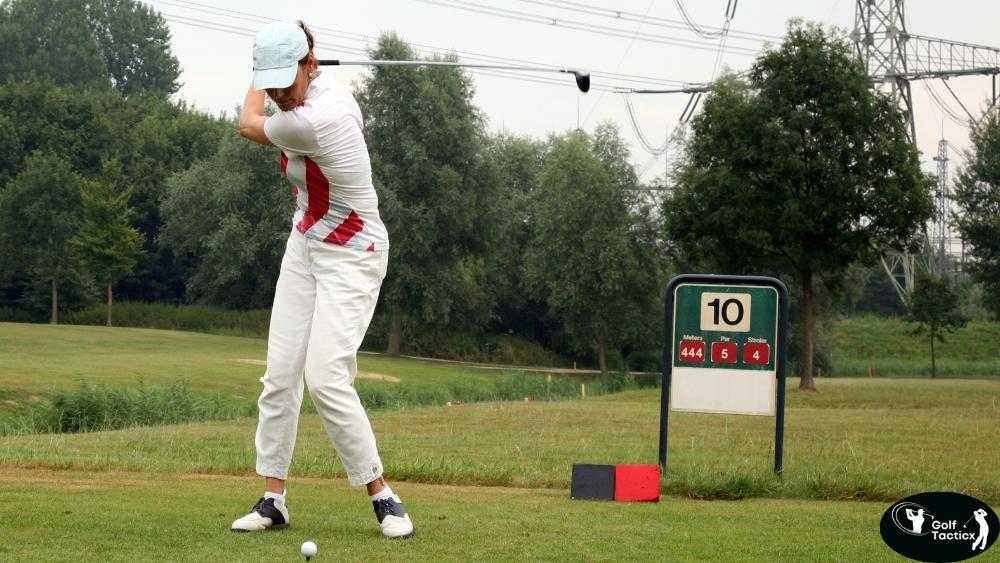As a beginner golfer, understanding how to approach risk-reward shots is essential for improving your performance in tournament settings. In our previous post, we covered Analyzing Pin Positions to Maximize Birdie Chances.
These shots present opportunities to gain strokes but also carry the potential for significant losses. Let’s explore how you can effectively navigate these situations to enhance your game.
In many cases, success depends on your ability to weigh distance, hazards, and your current position on the leaderboard. Approaching Risk-Reward Shots in Tournament Golf also involves considering course conditions, such as wind direction, green speed, and lie quality.
By learning to balance aggression with smart play, you can make confident decisions under pressure. Whether you’re aiming for a heroic shot over water or laying up to avoid trouble, mastering this skill will help you stay competitive. Ultimately, Approaching Risk-Reward Shots in Tournament Golf is about calculated choices, not blind risks.
Understanding Risk-Reward Shots
Risk-reward shots are those that offer the possibility of a substantial gain, such as reaching a par-5 in two shots or attempting a challenging approach to a tucked pin. However, they also come with the risk of a poor outcome, like finding a water hazard or landing in a bunker. The key is to assess whether the potential reward justifies the risk involved.
Assessing the Situation
Before deciding to take on a risky shot, consider the following factors:
Course Layout: Analyze the hole’s design, including the placement of hazards like water, bunkers, and out-of-bounds areas. Understanding the course layout helps in evaluating the risks associated with a particular shot.
Your Skill Level: Be honest about your abilities. Attempting a shot that is beyond your current skill set can lead to unnecessary mistakes.
Tournament Context: Consider your position in the tournament. If you’re leading, playing conservatively might be advantageous. Conversely, if you’re trailing, taking calculated risks could help you catch up.
Weather Conditions: Factor in wind speed, direction, and temperature, as they can significantly influence ball flight. Even a slight breeze can turn a well-struck shot into a hazard-bound ball if not accounted for.
Lie of the Ball: The position of your ball — whether it’s in the fairway, rough, bunker, or on an uneven slope — should influence your decision. A poor lie might reduce control, making an aggressive shot too risky.
Mental State: Your confidence level and focus matter. If you’re feeling uncertain or rushed, it may be smarter to choose the safer option rather than forcing a high-risk shot.
Time Management: In tournaments, slow play can cause unnecessary pressure. Quickly but carefully assessing these factors ensures you make a solid decision without disrupting pace of play.
Calculating the Risk vs. Reward
Evaluate the potential outcomes of the shot:
Potential Gain: What is the best-case scenario? For example, reaching the green in two on a par-5.
Potential Loss: What is the worst-case scenario? This could be landing in a hazard, resulting in a penalty stroke.
Probability of Success: Assess how likely you are to execute the shot successfully based on your skill level and experience.
Developing a Strategy
Based on your assessment, decide on a course of action:
Play It Safe: If the risks outweigh the rewards, opt for a conservative approach. For instance, laying up short of a water hazard instead of attempting to carry it.
Take the Risk: If the potential reward justifies the risk and you feel confident in your ability to execute the shot, proceed with the aggressive play.
Visualize the Shot: Before committing, picture the entire shot in your mind — from swing to landing. Visualization helps you commit fully to your choice, whether safe or aggressive.
Club Selection: Choose a club that matches both your intended shot and the current conditions. Even slight adjustments, like using a lower-lofted club to keep the ball under the wind, can improve execution.
Have a Backup Plan: Even when taking the risk, plan for a safe escape route if things don’t go perfectly. This could mean aiming to a larger target area or avoiding the most dangerous hazard.
Stay Committed: Once the decision is made, trust it. Second-guessing mid-swing often leads to poor contact and costly mistakes.
Managing Emotions
Tournament play can be stressful, and emotions can cloud judgment. Maintain composure and stick to your pre-determined strategy. Avoid making impulsive decisions based on frustration or overconfidence. It’s normal to feel pressure, especially when the stakes are high, but learning to control your emotions is what separates consistent players from the rest.
When nerves start creeping in, focus on the process instead of the outcome. Remind yourself that every golfer faces tough shots, and staying calm allows for clearer thinking and better execution. Sometimes, stepping back for a moment, taking a deep breath or briefly visualizing the shot can reset your mindset.
The key is not letting a single mistake or success derail your concentration. Managing emotions effectively helps keep your game steady and your decisions smart throughout the tournament.
Learning from Experience
After the round, reflect on your decisions regarding risk-reward shots:
Review Outcomes: Analyze both successful and unsuccessful attempts to understand what worked and what didn’t.
Adjust Strategy: Use these insights to refine your approach for future rounds, balancing aggression and caution appropriately.
Reading Course Conditions
In tournament golf, reading the course is as important as executing the shot itself. Before you decide on a bold play, assess factors like wind direction, green speed, and ground firmness.
Even subtle gusts can push your ball toward hazards, while softer greens can give you more control on landing. Taking just a few seconds to notice flag movement, the feel of the turf, and weather shifts can turn a risky shot into a well-calculated opportunity.
Common Risk-Reward Scenarios in Tournament Play
| Scenario | Reward Potential | Risk Factor | Pro Tip |
|---|---|---|---|
| Carrying a Water Hazard | Eagle/Birdie chance | Penalty stroke if short | Attempt only if confident with carry distance |
| Cutting a Dogleg | Shorter approach | Landing in rough or trees | Use controlled draw/fade for safer result |
| Reaching Par 5 in Two | Possible eagle | Bunker or OB | Evaluate lie and wind before committing |
Practicing Under Pressure
- Create practice drills where you must choose between aggressive and conservative plays from tricky lies.
- Use a timer or shot clock to simulate real tournament pacing.
- Practice with friends in competitive mini-games to build decision-making confidence.
- Review each choice afterward to understand why it worked or failed.
Ask ChatGPT
Conclusion
Mastering the art of handling risk-reward shots is crucial for success in tournament golf. By carefully assessing each situation, considering your skill level, and managing your emotions, you can make informed decisions that enhance your performance. Remember, golf is a game of strategy and patience; sometimes, the best play is the one that minimizes risk.
It’s also important to review your decisions after each round, noting what worked and what didn’t. This habit builds experience and sharpens your instincts for future tournaments.
Watching how professional players manage these moments can also provide valuable insight into smart course management. Over time, you’ll learn when to take the bold shot and when to play it safe, turning potential risks into scoring opportunities.
Up next, we’ll shift focus to the mental side of the game with Building Unshakable Mental Resilience, helping you develop the mindset needed to thrive under pressure.
















Leave a Reply